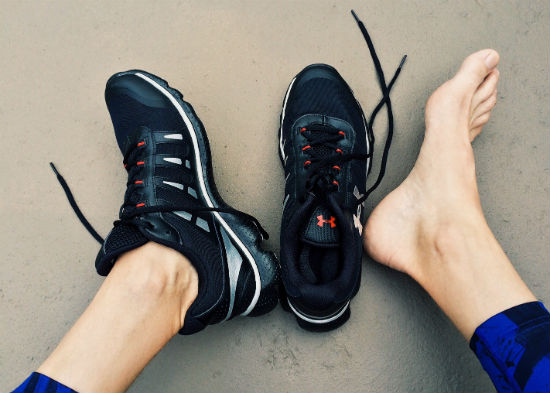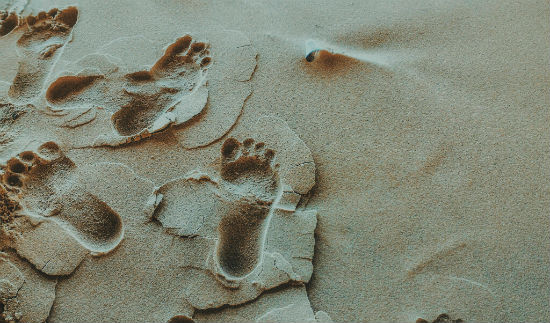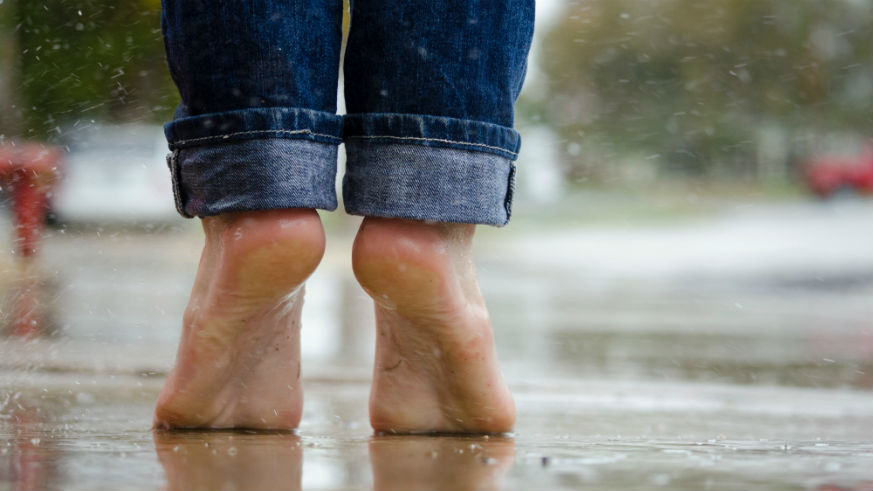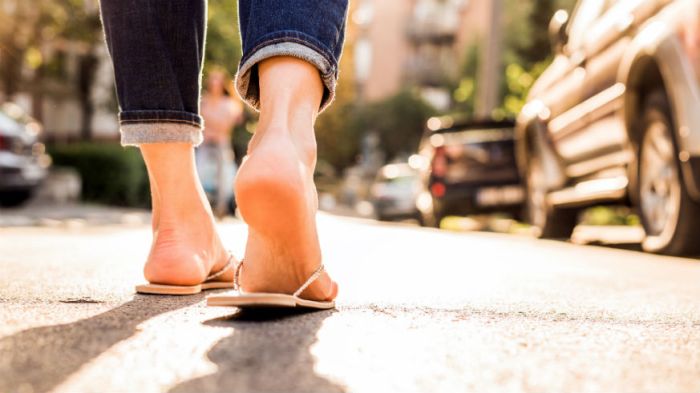Let’s talk about feet. Now that summer is in full swing, they’re seeing a lot more daylight. Naturally, you may not hesitate to slip off your shoes to let your toes breathe — after all, walking barefoot can feel liberating — but this can negatively impact your stride and overall foot health.
Metro spoke to Dr. Miguel Cunha, a leading podiatrist in Manhattan and founder of Gotham Footcare, about the risks of walking barefoot and the places we’re most prone to infections.
Avoid walking barefoot on hard surfaces
“Walking barefoot on hard surfaces allows our foot to collapse, which can lead to a tremendous amount of stress not only to the foot, but to the rest of the body,” explains Dr. Cunha.
This can affect your gait (your stride when you walk or run). Dr. Cunha explains that we naturally pronate (move our feet inward to absorb shock and distribute weight) during the gait cycle.
With normal pronation, “the foot ‘rolls’ inward about 15 percent, comes in complete contact with the ground and can support your body weight without any problem,” according to Runner’s World.
But, “when we walk barefoot, we pronate for a longer period of time, which then alters the biomechanics and distribution of pressure and weight across the foot,” Dr. Cunha says. “This imbalance may increase the progression of underlying foot deformities such as bunions and hammertoes and lead to painful conditions associated with excessive pronation such as arch and heel pain, shin splints, posterior tibial tendonitis and Achilles tendonitis.”
In extreme cases, this can “translate upward, affecting other parts of the body such as our knees and back.”
Walking barefoot can lead to infections
Walking barefoot exposes your feet to bacteria and fungi. Such infections include athlete’s foot — “scaliness and itchiness to the bottom of the foot and in between the toes” — or “fungal nails.”
“These organisms first infect the skin, and then they may infect that nails, leading to thickening, discoloration and brittleness of the nails,” Dr. Cunha explains. “Both conditions become not only unsightly but also contribute to an unpleasant odor.”
Diabetics and people who wear close-toed shoes in outdoor environments for long periods of time (like construction workers) are more prone to these infections.
For diabetics, “the disease changes the normal hydration of the skin which then alters the texture, tone, and turgor of the skin. This may lead to fissuring of the skin of which increases the chances of contracting an infection.” Diabetics also have a harder time fighting off infections.

Where should I avoid walking barefoot?
The bacteria that causes infections “tend to grow in dark and moist environments,” such as communal bathrooms, pools and gyms — so, Dr. Cunha stresses the importance of wearing shoes in these facilities.
Though athlete’s foot is more common in the winter — because we “wear thicker shoes and boots that air out less and may be exposed to more moisture from rain or snow” — these infections are still common during the summer because people walk barefoot at pools and in gyms.
“Avoid walking barefoot outside of the house in most places unless absolutely necessary,” Dr. Cunha urges. Yogis, for example, usually practice barefoot. He suggests, though, cleaning your feet with baby wipes after yoga sessions to avoid contracting an infection.
You can also get these infections at home.
So, I can’t walk around barefoot at home?
You can, but you have to be careful.
“You can contract an infection from walking barefoot at home if your spouse or roommate has an infection,” Dr. Cunha explains. Anyone who has an infection should not be walking barefoot in the house, and he recommends spraying Lysol on the floor of the shower “to help kill any microbes that may cross contaminate.”
Treat infections with OTC medicine first
In the event that you contract a fungal infection, Dr. Cunha says it’s worth trying an over-the-counter anti-fungal medication for the first two to three weeks to see if there’s improvement. If the infection persists, then you may need a prescription.
“If there is nail involvement, then a prescription topical and sometimes oral medication may be preferable if indicated,” he advises. “Laser treatment does not always work.”
He also recommends spraying Lysol in your shoes regularly.

There are still important benefits of walking around barefoot
Not all surfaces are bad to walk barefoot on — walking barefoot on soft surfaces like carpets and grass is actually good for your feet.
And, beachgoers will be pleased to know that taking relaxing strolls on the sand has benefits as well.
This includes better circulation, “which increases the nourishment of nerves, muscles and bones of the foot and also helps minimize swelling of the lower extremities,” Dr. Cunha explains.
“Walking barefoot may also help improve the strength and flexibility of the muscles and ligaments of the foot,” he continues. This can ultimately reduce foot injuries and improve your posture and balance.
So, as the summer continues to blaze on, remember this: when it comes to public pools, bathrooms and gyms, keep those shoes on. You’ll be better for it.
















